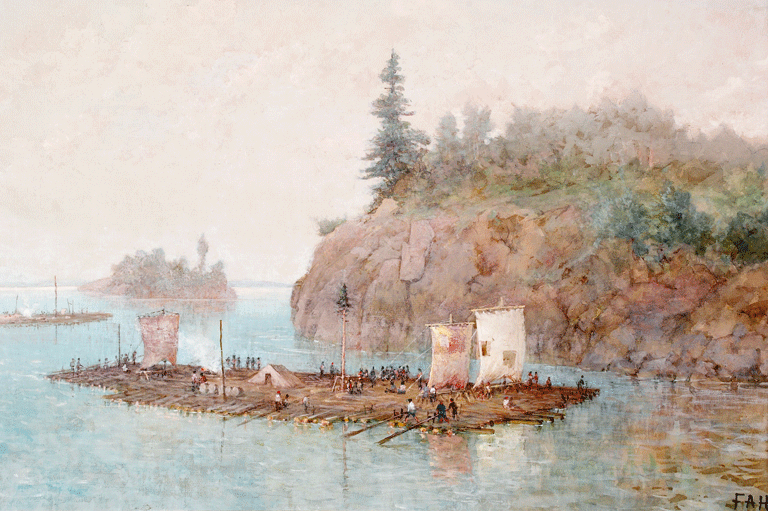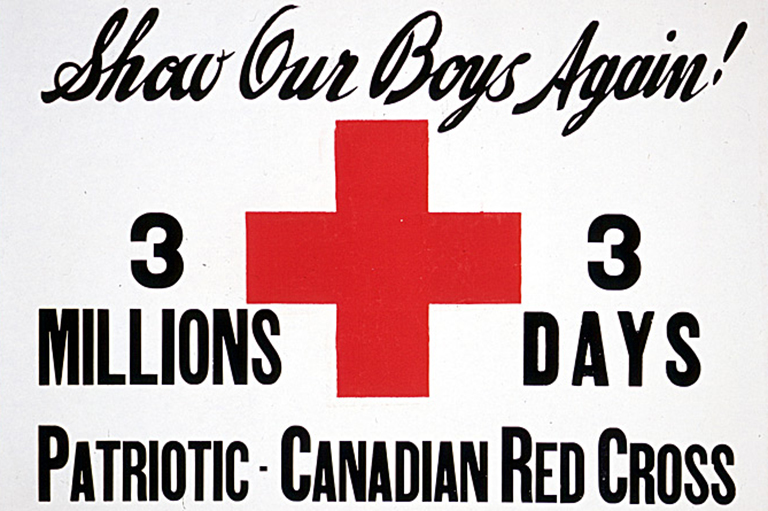Helping Students Identify Inquiry Topics
This lesson links to the section “Discover Your Story” found on pages 2 to 5 in What’s The Story?
Background
Before students can create their own inquiry questions, they have to spend some time brainstorming possible topic ideas. This activity is designed to encourage students to make observations about the world around them. It corresponds to the prompt found on page 5 of What’s the Story?
On your way to school and your other activities, pay special attention to what you see. Come up with a list of things whose history you’d like to know more about — maybe it’s a person, an event, a place, an object, an idea. Visit CanadasHistory.ca/WhatsTheStoryTopic to share your ideas.
Activity
After students prepare their lists, discuss their ideas further to inspire a direction or topic for their research project. Some discussion questions could be:
- Did any of the items on your list prompt you to investigate further?
- What questions do you still have about any of the items on your list?
- Are any of the items representative of or connected to an event in Canadian history?
- Have you encountered something that matters to you?
- Have you uncovered something that you think others should know about?
After the discussion, choose one of the following tasks to encourage further exploration.
Option 1: Neighbourhood Walk
Tour the area around your school or a local area of interest to model discovering local histories. You can explore natural or human-made areas, such as buildings, parks or streets. Make observations and inferences about what you see and encourage students to share their own observations and inferences, such as “What can we assume based on the information on the plaque?” and “It would be interesting to know more about who designed this.” Ask students to share evidence to support their inferences, by asking questions like “Why do you think that?” or “What do you see that makes you think that?”
Ask questions to evoke deeper thinking. For example:
- What is this? Who designed it? What is it called? Why was it built? Where exactly is it? Who uses this place now? When was it built? How has it changed? Why might that be?
- Does this remind you of anything? Does it symbolize anything? Can you connect it to something else?
- Have you noticed this before? Why or why not?
- What positive impact might this place have on the people here? What negative impact might it have?
- Does this place matter to you? Why or why not?
Encourage students to ask themselves questions and to make careful observations on their way home or to their activities over the next few days to see what might inspire curiosity about their local history.
Option 2: Map Exploration
Choose a local map or a few different types of maps to share with the class. These could be topographical, tourist or cycling path maps, for example. Ask students to identify features they are familiar with and ones they have not noticed before. Invite students to speculate about when and why different features appeared in their local history. Ask students to identify which places matter to them or the people who live in the community and to explain why. Lead a discussion about how students’ attitudes towards their local community may have changed or been reinforced by this process of exploring a map as if they were historians. Other possible discussion questions could be:
- How might the community be different without this feature or place?
- Who benefits the most because of it? How might that have changed over time?
- Are there any noticeable patterns or trends in the names or locations of places or features?
Encourage students to ask questions and to make careful observations on their way home or to their activities over the next few days to see what might inspire curiosity about their local history. If they were intrigued by the exploration of a map, suggest that they visit some of the places that piqued their curiosity to make real-world observations.
Option 3: Visualization Exercise
Invite students to close their eyes and to picture themselves preparing to leave the school at the end of the day. Guide students through a visualization activity, taking into account different modes of transportation, weather, routes, features of interest and points of reference. Have them use their senses to recreate their whole journey. Proceed slowly and suggest to students that they imagine details if they cannot remember them.
After they “reach” their destination, invite students to share their visualized observations with a partner. Ask students to describe what they remembered and what they could not remember and speculate why that might be. A further discussion could lead to questions about what features help to characterize a place or develop a sense of place in the people who live there. This may include questions such as:
- Which prompts, details or features helped you recognize and visualize different places on your journey?
- Which prompts, details or features gave you a sense of belonging or familiarity?
- Which points of reference matter most to you when you leave school every day?
- What aspects of your journey are you wondering about after closely imagining them?
- How do you feel about your everyday journey? What does living here mean to you?
- What do you think your school like in the past? What would your journey home have looked like? What did your community mean to the people who lived here before you?
Encourage students to ask themselves questions and to make careful observations on their way home or to their activities over the next few days to see what might inspire curiosity about their local history. Remind them to be especially observant of parts of their journey that they struggled to visualize in class.
Response and Reflection
After students complete one of the activities, ask them to revisit the prompt found on page 5 of What’s the Story? Of all the people, places and subjects they explored, ask students to choose three to share online. Encourage students to describe what it is that interests them about these topics. Responses can be shared at CanadasHistory.ca/WhatsTheStoryTopic.
Invite students to read the submissions from other students across Canada. Encourage discussion and reflection by asking questions such as:
- Did other students have similar topic ideas? Were there any new ideas that you were interested in? Did anything surprise you about the responses you read?
- Did you notice any trends in the types of topics students were interested in? What were some of the similarities and/or differences you noted? Try to find a response from a student in a different province or territory — how was their response similar to or different from yours?
Themes associated with this article
Advertisement







